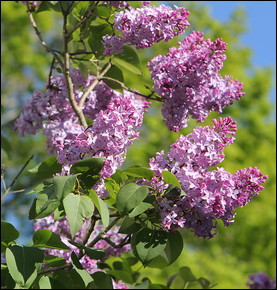 The many flowers that bloom around Mother’s Day suggest that maybe the day wasn’t chosen randomly. |
A few decades ago I wrote a column that started with my daughter asking what she should plant in her first vegetable garden. Since then, we have had a most enjoyable dialogue sharing garden ideas, design, what died, what to add.
Think about your first memory of a garden. Was it picking flowers with your mother. Smelling the violets. Seeing if the buttercup reflected yellow under your chin. Perhaps it was picking your grandmother’s berries. Or just sitting and looking, and sharing the landscape.
If you are reading this column, you probably garden, at least some. Maybe just a flowerpot on the windowsill. So think back and enjoy the memory. Mother? Grandma? Who? What?
I’ll share a few of mine. When I was 4 I brought home a dandelion and called it a buttercup. My mother was so distressed at such a lack of information that we moved to a more rural place. When I was 6, the gardener weeded all my flower seedlings out of the rose bed. Not all garden memories are happy.
But I loved the garden, and the flowers, which my mother (a good artist) painted regularly. I picked lily of the valley blossoms for my mother (from the orchard of my Girl Scout leader who didn’t mind). One of my friend’s Mothers’ Day gifts were always topped with these fragrant, though fleeting, blooms. Much like our memories.
I have so many of my mother’s good old reliable flowers growing in my garden. Her iris has buds while the expensive German ones I recently bought have few. I could go on and on with these remembrances but you would die of boredom. It suffices to say that as I pass the little white hosta from the beach house of my youth it always cheers me.
Many, many flowers bloom around Mother’s Day – which is perhaps why mid-May was chosen. Flowering dogwood. Azaleas and Rhododendrons. Dandelions and buttercups. Lily of the valley. Wild mustard. Violets. Ajuga. Appleblossoms. And, of course, lilacs.
When the flowers come out so do all the biting bugs of summer, black fly, no-see-ums and mosquito. They itch and carry diseases, particularly mosquitoes. Everything that has standing water should be emptied or treated, particularly rain barrels and stagnant ponds. Fortunately, we have a very safe, widely used pesticide for the mosquito larvae that breed in standing water. Called Bt Israeliensis or Mosquito Dunks, it was discovered by an Israeli entomology professor who spent a year at the Harvard School of Public Health.
Some people’s memories are very poignaint. He came to collect larvae from my swamp. As he passed the purple lilacs he said that they reminded him of his mother. Lilacs don’t grow in Israel, I said.
It seems when he was 5, his family was rounded up by the Nazis. He, being blonde and blue eyed, was put in a special children’s concentration camp to show to foreigners. The children had to draw happy pictures for these visitors. Liberated when he was 12, an orphan, it took 3 years for him to be allowed to go to Israel. When he got off the boat, they handed him a gun, and said go help defend our country against the Arabs.
He asked to take home some of my lilacs.
So as you remember Mothers Day, be thankful that we live in this country, and savor your happy garden memories. Take the day to make beautiful new memories your children and grandchildren will always have to cherish. And don’t forget to put mosquito dunks into your rain barrel, birdbath and fish pond.
Ruth S. Foster is a landscape consultant and arborist. More gardening
information can be found on her website www.mothersgarden.net.
Credit: www.mothersgarden.net




























